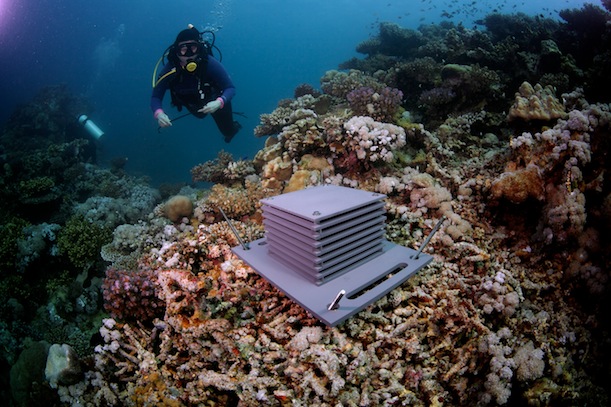What’s Working When It Comes to the Ocean?
On World Oceans Day, scientist Nancy Knowlton reflects on the health of our seas
![]()

Knowlton on a research dive. The Autonomous Reef Monitoring Structure (ARMS) is in the foreground. Photo by Michael Berumen, courtesy of Nancy Knowlton

Dr. Nancy Knowlton is the Sant Chair for Marine Science at the Smithsonian’s National Museum of Natural History and a scientific leader of the Census of Marine Life.
World Oceans Day often prompts reminders of all the terrible things that have already happened to the ocean and the even scarier prospects for the future. While there’s no doubt that all is not A-OK when it comes to ocean health, it’s worth remembering that when people have come together to make things better, they often succeed. These success stories span the globe and the gamut of marine habitats and organisms.
One of the biggest impacts people have had on Planet Ocean is through fishing and hunting. The Steller’s sea cow was exterminated a mere 27 years after its discovery in the North Pacific. Fortunately, protections have been put in place for many marine organisms, albeit sometimes just in the nick of time. North Atlantic right whale numbers are increasing, and the sea otter brings oohs and aahs from admiring tourists in northern California. Fish numbers have also often increased with protection, either through careful controls on harvesting methods and amounts or through the establishment of marine protected areas.
Sometimes our harvesting has destroyed the very habitat that the creatures we like to eat create. Oyster reefs once dominated shallow waters along much of the east coast of the U.S. But massive dredging efforts left muddy bottoms that new oysters can’t colonize, leading to a collapse of the populations of these magnificent bivalves who not only nourish us, but through their filtering clean the water where they live. In these cases, active restoration rather than simple protection has been required. This is sometimes harder than one might expect, but here progress is also being made.
Hunting and fishing are not the only things we do that can harm marine life. Declining water quality and other forms of pollution, such as the giant dead zone that forms off the mouth of the Mississippi each year, can also be a big problem. Once again, however, restrictions on what can be dumped into our waterways have resulted in dramatic turnarounds. Over a century ago, Monterey Bay was a mess, polluted by the industrial waste from the canneries on its shoreline. But now its ecosystem is restored—sustained and even thriving as a standout example of how public education programs and healthy tourism can have great impact. We still have a long way to go with plastic pollution, but communities around the world have started phasing out the use of plastic bags. China’s five-year anniversary of its ban on plastic bags has reportedly reduced consumption by 67 billion bags.
Ocean warming and ocean acidification loom as larger threats over the long term, and here successes are proving harder to achieve. But one of the important lessons of the last decade is that reducing local stressors can make a big difference, building the resilience of ocean ecosystems and buying us invaluable time as we figure out how to reduce the amount of carbon dioxide going into the atmosphere.
Bottom line? We need to think and act both locally and globally if we want to pass on a healthy ocean to future generations. In an era when catastrophes get much of the coverage, it’s important to remember that we can still make a difference. There are many successes to celebrate. Ocean conservation is working and we can learn from our successes. But there is plenty of work still to do.